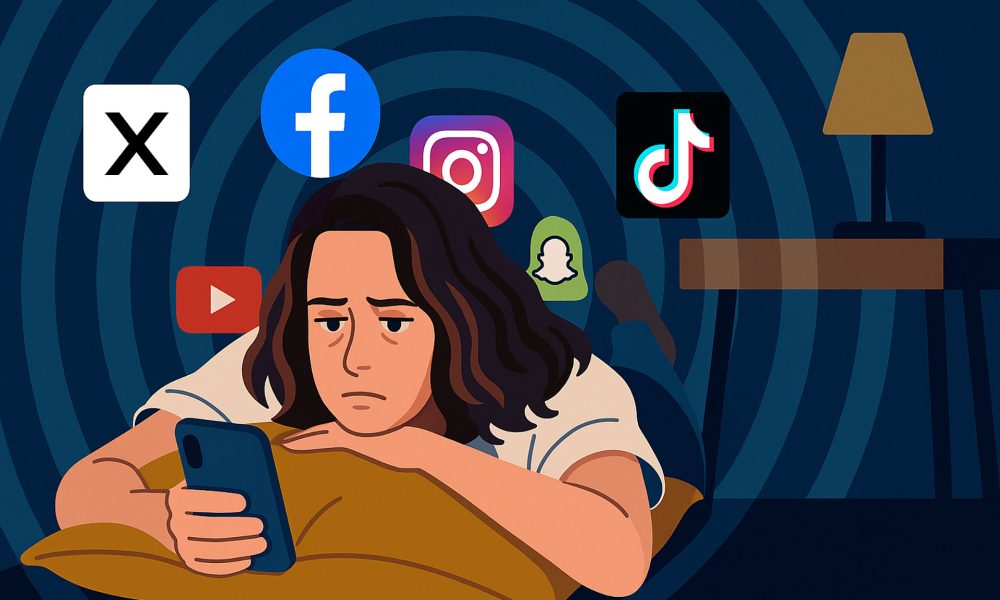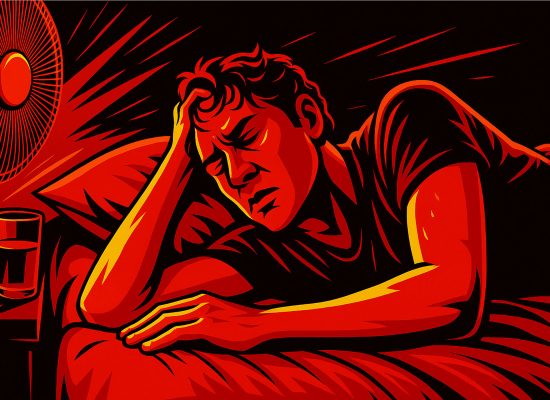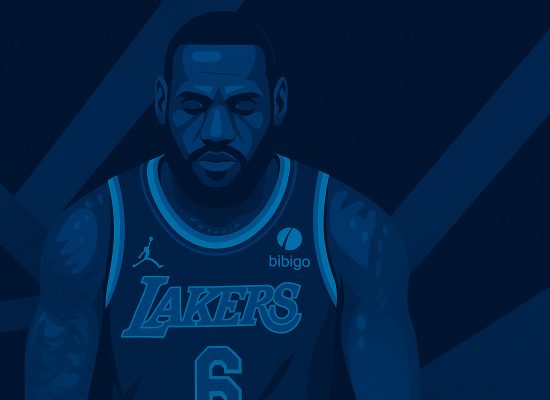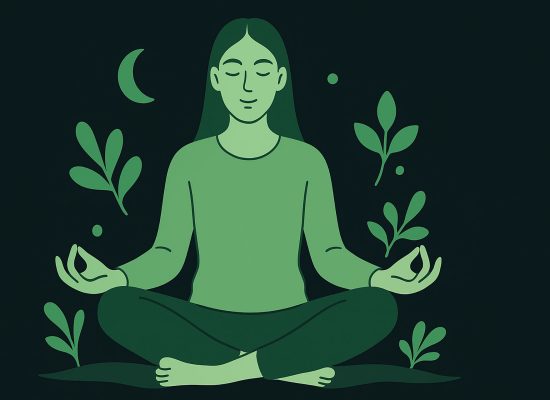Ever found yourself three hours deep into TikTok, neck craned, thumb sore, brain buzzing with worst-case headlines and influencer drama? Maybe it started innocently enough—you had a rough day at work, your brain felt fried, and you figured a quick scroll might help you decompress. But instead of feeling better, you found yourself watching climate disaster clips, heated political takes, and twenty-part breakup stories from total strangers.
Table Of Content
You kept scrolling, hoping the next video might lighten the mood, offer a laugh, or bring some relief—but it didn’t. It just kept pulling you in deeper. That’s doomscrolling—a sneaky, stress-inducing loop where one minute you’re checking the news, and the next you’re spiraling through a buffet of anxiety-inducing content. In a world where social platforms are designed to keep us hooked, doomscrolling isn’t just common—it’s engineered.
What Is Doomscrolling?
Doomscrolling is the compulsive habit of binging bad news or emotionally heavy content online. It often starts innocently—just a quick scroll while waiting for coffee—and snowballs into an hour-long descent through TikTok rants, climate crises, and celebrity feuds. Platforms like Twitter, Instagram, and TikTok thrive on engagement, and unfortunately, nothing engages quite like doom.
Netflix’s Adolescence explores how young people are especially vulnerable to this pattern, spotlighting how short-form, emotionally charged videos hijack their attention spans and self-worth. Explore the themes of social media addiction in Adolescence.[1]

Why Are We Drawn to Negative News?
Our brains are wired with a negativity bias—a survival mechanism that makes us focus more on threats than on neutral or positive events. This bias helped our ancestors survive danger, but today it plays a major role in doomscrolling symptoms we often experience without realizing it.
When platforms constantly serve up alarming stories, our natural negativity bias meets the endless scroll, leading to higher doomscrolling and anxiety levels. Studies show that negative headlines get more clicks, which fuels even more exposure to distressing news. Without mindful breaks, the effects of doomscrolling on mental health can build up quietly, affecting our mood, focus, and overall resilience.[2]
Why Is Doomscrolling So Addictive?
Believe it or not, doomscrolling is not a moral failing—it’s brain chemistry. Our minds are wired for negativity bias, meaning we naturally give more weight to threatening or alarming information. Add the dopamine hits that come from fresh content, and you’ve got a perfect storm of compulsive scrolling. TikTok and similar platforms are built to feed this cycle, rewarding your brain’s reward center with each new swipe.[3]
In a world where social platforms are designed to keep us hooked, doomscrolling isn’t just common—it’s engineered.
A recent study confirms this: your brain loves novelty and urgency, especially when dressed up in alarming headlines and flashy visuals. Every swipe delivers a fresh hit of dopamine—the brain’s reward chemical—even when the content is distressing. The fear-based novelty keeps your mind on high alert, making it harder to pull away. This is why doomscrolling symptoms can feel so hard to break: your brain is trapped between craving novelty and absorbing anxiety at the same time.

The Role of Algorithms in Doomscrolling
Social media platforms are engineered to maximize engagement, and their algorithms play a powerful role in doomscrolling. They track your interactions—likes, shares, watch time—and feed you content designed to keep you hooked. Unfortunately, negative news and emotionally charged headlines trigger stronger reactions, making them algorithm favorites. Over time, this endless feed reinforces doomscrolling and anxiety, creating a cycle that’s hard to break.
The effects of doomscrolling on mental health are profound. Algorithms can trap users in “filter bubbles,” exposing them mostly to distressing perspectives and limiting balanced viewpoints. This not only worsens stress and anxiety but can also distort how we see the world, making it harder to stay emotionally resilient offline.
How Does Doomscrolling Affect Your Mental Health?
Consuming constant streams of distressing content isn’t a harmless pastime. It can seriously mess with your mood, stress levels, and sleep. A 2022 NIH study found doomscrolling increases cortisol—the body’s stress hormone—while impairing emotional regulation and decision-making. Over time, the effects of doomscrolling on mental health go beyond stress. Chronic exposure to negativity can dull emotional responses, leading to emotional exhaustion and burnout. It becomes harder to feel joy, stay motivated, or connect meaningfully with others when your brain is stuck in survival mode.
Translation? Your ability to stay calm, think clearly, or even fall asleep gets worse the more you scroll. And no, powering through it won’t make it better.

Why Is Doomscrolling Bad for You?
So what’s the big deal? In the short term, doomscrolling leaves you frazzled and tired. In the long run? It can actually rewire your brain. A PubMed study found links between prolonged exposure to negative digital media and reduced mental flexibility and emotional resilience. In other words, the less time you spend scrolling, the happier your brain becomes.
If you’ve ever felt emotionally numb, unmotivated, or like you’re constantly playing catch-up with your own brain, your doomscrolling habit may likely be to blame.
How Is Doomscrolling Linked to Anxiety and Depression?
Picture this: It’s 11:30 PM. You had a tense conversation with a friend earlier, and now your mind’s spinning. You open Instagram to distract yourself and stumble onto a thread about friendship red flags. One post leads to another, and soon you’re deep into stories about toxic relationships, betrayal, and loneliness. Instead of feeling soothed, you’re now convinced everyone secretly hates you. That’s the trap—doomscrolling promises comfort but delivers anxiety on a silver platter.
Psychology Today explores this toxic cycle, confirming that doomscrolling doesn’t just reflect anxiety and depression—it can cause or worsen them. Research shows a strong connection between doomscrolling and anxiety, finding that excessive exposure to negative digital media is associated with higher anxiety and depressive symptoms. Doomscrolling doesn’t just reflect your mood—it can actively create it.[4]
It’s a cycle that feels inescapable—but naming it is a step toward breaking it. Understanding this connection can help reframe your scrolling habits not as a weakness, but as a signal: your brain is looking for comfort in a place that only deepens discomfort. The next time that urge hits, recognize it for what it is—and remind yourself that what you’re seeking might be better found offline.

What Are the Signs You Might Be Doomscrolling Too Much?
Not sure if your habit qualifies as doomscrolling? Here’s a litmus test:
- Emotional aftermath: You log off feeling more stressed or irritable than when you logged on.
- Attention drift: Tasks that once felt easy—like reading or holding a conversation—now feel like climbing Everest.
- Mind-body disconnect: You’re constantly tired, even when you sleep enough.
- Compulsive checking: You can’t resist checking the news or social apps first thing in the morning… and last thing at night.
- Physical tension and soreness: Tension headaches, tight shoulders, and eye strain after long scrolling sessions.
- Restlessness: A constant urge to check social media, even during times meant for relaxation.
If you nodded at more than one of those, it might be time to take a digital breather.
How to Stop Doomscrolling Before It Harms Your Mind
Doomscrolling isn’t just a personal issue—some governments are now treating it as a public health concern. Singapore, for instance, has legally limited TikTok use for those under 15 to help protect their mental health and reduce FOMO.[5]
But here’s the thing: for most of us, no one’s going to swoop in with a policy to save us from ourselves. This is a DIY project—one that starts with noticing our habits in real-time. Like that moment when you’re winding down for bed and think, “I’ll just check one more thing,” and suddenly it’s 1:00 AM and you’ve watched a two-hour YouTube documentary on cults, read a Reddit thread on economic collapse, and refreshed your email twelve times.
It’s in these quiet, seemingly harmless moments that doomscrolling does the most damage—not with a bang, but with a buzz. Adults have to take matters into their own hands, not through shame, but through conscious design. Recognizing the impulse is step one. Interrupting it with something healthier? That’s where the magic starts.

5 Ways to Break Free from Doomscrolling and Reclaim Mental Clarity
Breaking up with your scroll spiral doesn’t require a digital exorcism—just a few smart shifts:
- Set App Limits: Most phones come with tools to limit app time. Set daily caps and use downtime modes to lock out apps during key focus or rest periods.
- Replace Doomscrolling with Positive Activities: When the urge to doomscroll strikes, try stretching, making a cup of tea, going for a short walk, or reading an uplifting story instead of consuming more negative headlines.
- Digital Detox: Pick one day a week—like Sunday morning—for a full digital detox. Spend that time reconnecting with offline joys like talking to a friend, journaling gratitude, or savoring a mindful breakfast.
- Use Screen Time Tools: Apple’s Screen Time and Android’s Digital Wellbeing features let you monitor (and judge) your habits.
- Create Tech-Free Zones: Ban phones from the bedroom, dinner table, or bathroom. Yes, even the bathroom. Your brain—and probably your posture—will thank you.
Start small, and don’t aim for perfection. Even shaving off 30 minutes of doomscrolling a day can leave you feeling lighter, calmer, and more present.
How Can Mindfulness Help You Stop Doomscrolling?
Mindfulness isn’t just a nice sentiment—it’s a science-backed way to refocus your mind and curb impulsive behaviors. A Nature study found that regular mindfulness meditation significantly reduces anxiety and promotes emotional stability. Translation: it gives your brain the tools to say, “no thanks” to the endless scroll.
And here’s where things get exciting: Siddha Meditate’s app turns this science into a strategy. Its bite-sized mindfulness challenges help rewire your brain away from digital overload. Want to stop doomscrolling? Replace that reflex with a guided breath, posture awareness, a reset ritual, or a mini-meditation that actually feels doable. Start with baby steps!

Conclusion
Doomscrolling isn’t just a bad habit—it’s a subtle thief of peace, productivity, and presence. But you’re not stuck. With the right mindset and tools, you can rewrite your digital story. Choosing mindfulness over endless scrolling is how you stop doomscrolling before it takes a bigger toll on your well-being. Every small break you take helps protect your mental fitness, your energy, and your sense of balance.
Start your reset with Siddha Meditate’s mental fitness assessment. You’ll get a personalized look at your strengths, blind spots, and how a daily mindfulness practice can gently (but powerfully) take your thumb off the scroll and bring your focus back to now.
You’ve got a brain worth protecting. Let’s give it the break it deserves.
FAQs about How to Stop Doomscrolling?
1. What are the symptoms of doomscrolling?
Common doomscrolling symptoms include emotional exhaustion, irritability, difficulty concentrating, and disrupted sleep patterns. Physically, you might experience tension headaches, eye strain, or a sore neck from prolonged screen time. These signs indicate that excessive exposure to negative content is impacting your mental and physical well-being.
2. How does doomscrolling affect mental health?
The effects of doomscrolling on mental health are significant. Constantly consuming distressing news can elevate stress hormones like cortisol, leading to increased anxiety and depressive symptoms. Over time, this habit can diminish emotional resilience and contribute to a persistent sense of dread or hopelessness.
3. Why is doomscrolling linked to anxiety and depression?
Doomscrolling and anxiety are closely connected because our brains are wired to focus on negative information—a phenomenon known as negativity bias. This bias, combined with the endless stream of alarming news, can trap individuals in a cycle that exacerbates feelings of anxiety and depression. The more we engage in doomscrolling, the more we reinforce these negative emotional states.
4. How can I stop doomscrolling?
To stop doomscrolling, start by setting specific time limits for news and social media consumption. Use tools like app timers or screen time trackers to monitor your usage. Replace the urge to scroll with positive activities such as taking a walk, practicing mindfulness, or engaging in a hobby. Creating tech-free zones in your home, like the bedroom or dining area, can also help reduce the temptation to engage in this habit.
[1]: “Netflix hit should be ‘wake-up call’ for parents” Netflix hit should be ‘wake-up call’ for parents
[2]: “Negativity drives online news consumption” Negativity drives online news consumption
[3]: “How Negative News Takes Over Your Feed” The Data Behind Your Doom Scroll
[4]: “Are You Doomscrolling or Just Scrolling?” Are You Doomscrolling or Just Scrolling?
[5]: App stores to screen age of Singapore users to block kids from accessing apps for adults







